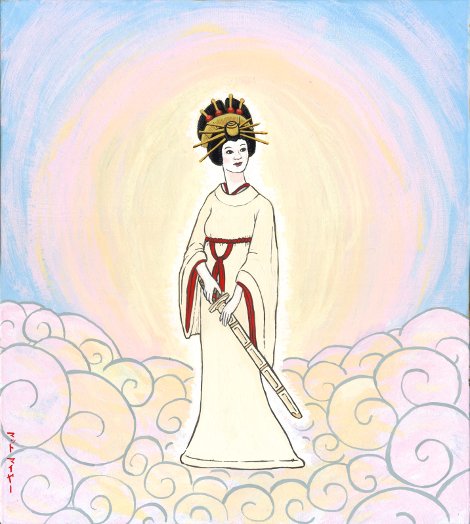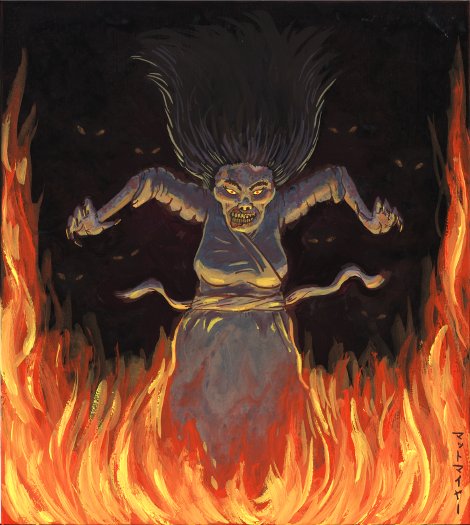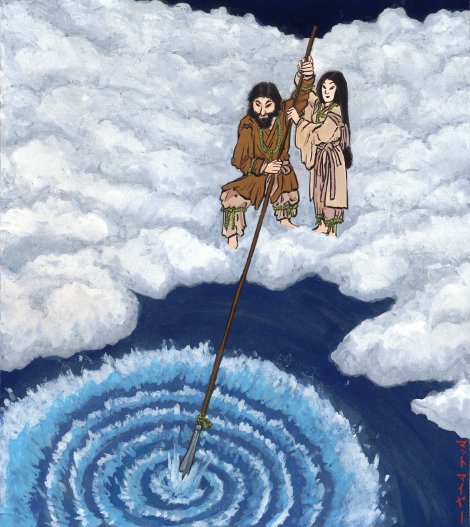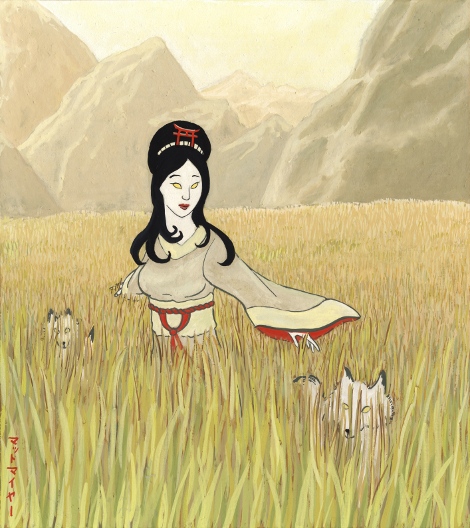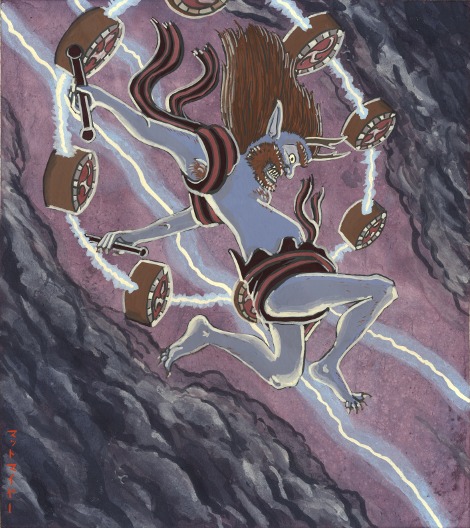I was reprimanded the other day by a Shintoist for saying that Susano’o was the evil storm god. He is the storm god, but not evil; he’s just kind of a jerk.
It probably all started from his birth. Susano’o was born at the same time as his sister Amaterasu and brother Tsukuyomi. Only, while they were born from their father’s eyes, Susano’o was born from the water that fell out from the inside of Izanagi’s nose. Kind of a divine snot rocket. Shortly after, he began making trouble — especially with his big sister Amaterasu. One day in particular, he got really drunk and angry and trampled all of her rice paddies and filled her irrigation ditches; he flung excrement into her shrines; he flayed a horse and threw its corpse at her loom, killing one of her handmaidens. Amaterasu was so upset she hid herself in the Heavenly Cave and didn’t come out for a long time.
Susano’o was punished by his father for this by being thrown out of Heaven. From this comes one of the most famous Susano’o stories. He went to Japan and met an elderly couple who had eight daughters. Or, they had had eight daughters; every year, the terrible eight-headed serpent Yamata-no-Orochi would come and eat one of them. Their last daughter, Princess Kushinada, was soon coming upon her final days. Susano’o, being a total badass, went and killed Yamata-no-Orochi. Afterwards, he noticed a funny lump inside the serpent’s corpse; he cut the beast open and discovered the sword Kusagani, which became one of the Three Sacred Treasures of Japan.
Eventually, in order to reconcile with his sister, he gave the sword to Amaterasu as a peace offering. She accepted it, and eventually passed in down to her grandson Ninigi, who passed it on to his grandson, Emperor Jimmu of Japan.

Susano'o
This will be my final painting in the Oh My Kami! series for a little while. I’ll be showing them at a gallery next month, and I’ll be returning to my Chickens of the World series for a time. This print — and the others in the series — is available on my Etsy store. If you’re interested in buying the original, please email me. Thanks for reading!


